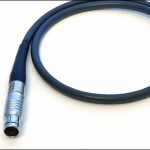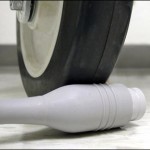The Role of the Cable Jacket for Medical Cables: Part 2 – The Feel of the Jacket and Cable Flexibility
The Feel of the Jacket and Cable Flexibility
|
|
In addition to the appearance of the cable jacket, the feel to the user often implies a great deal about the quality of the cable assembly. Different materials offer a different tactile feel and more significantly softer grades of even the same material feel different.
Silicone is typically the softest and most flexible material used for medical cable jackets. In addition to being soft and flexible, it can withstand a high number of sterilization cycles by autoclave. However, uncoated silicone cables are “tacky” and easily accumulate dirt. Because of this, it is common to add a coating over the cable jacket such as Parylene. The coating gives the cable jacket a silky texture and makes the cable easy to clean.
Rubberized polyvinylchloride is available as a very soft material. Contrary to some views, it is available in medical grades meeting FDA and ISO biocompatibility requirements as well as being RoHS compliant. A cable jacket made of PVC will be more durable than one made of silicone for the same wall thickness, can be very flexible and is a lower cost material.
|
|
Thermoplastic elastomers, such as Santoprene®, are more durable than either silicone or PVC and are available in soft grades that are quite flexible. TPE cable jackets typically have a “velvety” feel and which is thought to convey the feeling of higher quality.
Thermoplastic polyurethane (TPU) is the most durable of materials commonly used to jacket medical cable. It has excellent abrasion resistance, tensile strength and high tear resistance. And, while it is available in softer grades, it is typically not as flexible as the three previously listed materials.
 Silicone jacketed cable assemblies
Silicone jacketed cable assemblies Polyurethane is commonly used for
Polyurethane is commonly used for